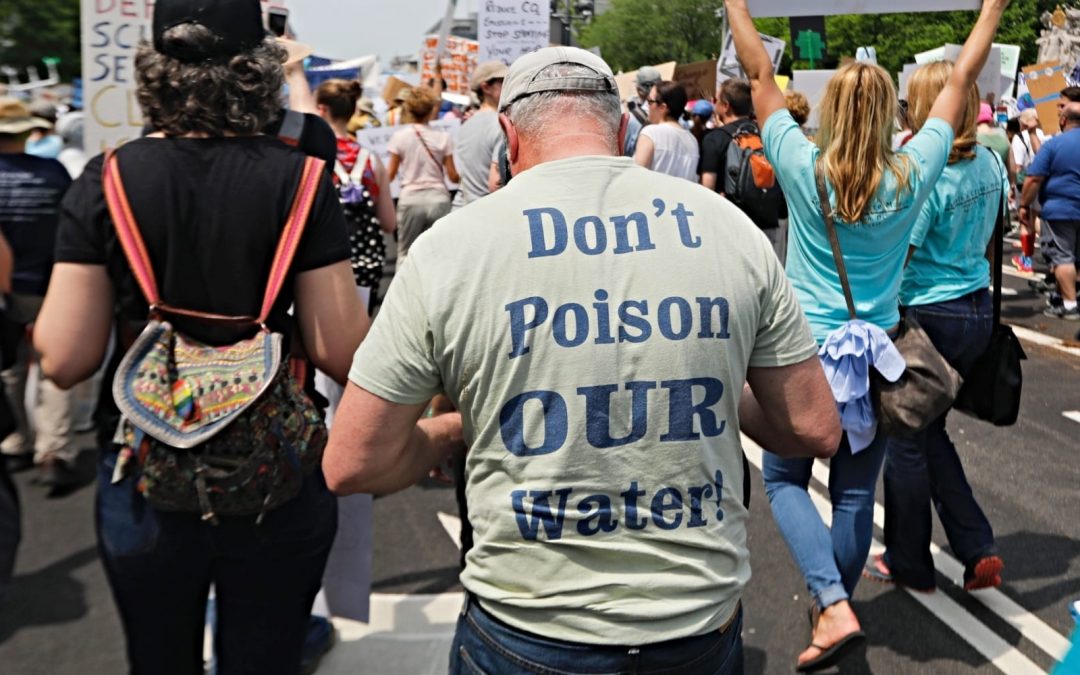An oil tanker spilled off the coast of Santa Barbara, California, 50 years ago in January 1969.
At the time, this was the largest oil spill in United States history, and it was one of the first disasters that the American public experienced visually through images and video of dying sea birds soaked in oil.
Then, just five months later during the morning of June 22, 1969, oil and debris on the surface of Ohio’s Cuyahoga River caught fire.
Images of the dirty polluted river on fire were featured on the front pages and covers of newspapers and magazines – burned into the minds of many Americans.
These national catastrophes prompted a new environmental concern in communities across the country and were the background to the first-ever Earth Day in 1970, which was the product of a coordinated multi-year effort to educate and raise awareness about the increasingly pervasive problem of pollution.
For many Christian groups, including Baptist denominations, Earth Day 1970 was a starting point for the development and expression of an environmental ethic focused on the widespread pollution of the air, land and waters of the United States.
Two months after the inaugural Earth Day, the Southern Baptist Convention passed a resolution declaring “man has created a crisis by polluting the air, poisoning the streams and ravaging the soil” and calling on churches to “remedy this environmental mismanagement.”
Yet, nearly a half-century later, man – quite literally – is still fouling up the air, land and water.
On Valentine’s Day, the Environmental Protection Agency formally proposed a rule to roll back protections to our nation’s waters under the Clean Water Act, a federal law that fends off unpermitted pollution in waterways.
The Clean Water Act – a bipartisan measure birthed during the presidency of Richard Nixon in 1972 – helps to maintain the safety of our water sources and ensures water quality.
The EPA’s proposed rule, dubbed the “Dirty Water Rule,” would redefine what areas are considered “waters of the United States” and thus protected under the Clean Water Act.
Critics note that the proposal would radically reduce the number of streams and wetlands protected under the Clean Water Act.
This rule – a gift to corporations and real-estate developers – exempts critical bodies of water affected by pollution and waste and could affect the drinking water of up to 100 million people.
The EPA’s rule would exempt up to 60 percent of waters and wetlands in the U.S., according to Public Employees for Environmental Responsibility.
The EPA’s own estimates indicate that more than half of the streams in the country could lose protection – streams that flow into larger bodies of water.
The new rule would strip away the 2015 Clean Water Rule – the product of a lengthy rulemaking process intended to clarify the authority of the Clean Water Act.
The 2015 rule was created following years of scientific, economic and legal analysis and a process that included hundreds of public meetings and more than a million submitted comments.
Unlike that rule, the EPA’s proposal has been rushed and rightly criticized for its lack of scientific support and extremely limited opportunity for public comment (the comment period has already expired).
While eliminating water protections may save money for industries, the public will pay the real cost, according to Blan Holman of the Southern Environmental Law Center.
“At the most basic level, everybody who drinks water should be concerned,” Holman said. “Every day we learn more about contaminants in our water – microplastics, Teflon chemicals and other toxins. The Clean Water Act is the main shield against that. We should be making the shield stronger and bigger, but they want to make it weaker and smaller.”
Mitch Hescox, president of the Evangelical Environmental Network, said the proposed rule is “a sad day for clean water and our children’s health” and called on Christians to oppose it.
“Our children are less safe today than they were yesterday. The most basic function of government is to protect its citizens. This new EPA rule fails that test,” Hescox said.
A diverse faith-based coalition of Protestant and Catholic groups wrote in an April 15 letter to EPA Administrator Andrew Wheeler that removing the existing protections to the nation’s water “puts human health and the rest of God’s creation at risk.”
Signatories called on the EPA to re-embrace its mission “to protect human health and the environment so that our communities and all of creation can have clean water.”
So, what can we as Christians do?
- Contact your elected officials.
- Connect with faith-based advocacy groups like Evangelical Environmental Network and Creation Justice Ministries.
- Stay informed with organizations like EarthJustice and the Environmental Defense Fund.
- Start a conversation in your faith community about ways to better care for God’s creation and be a public witness for its protection.
In the aftermath of the public health crisis in Flint, Michigan, and the vulnerabilities we face due to climate change and outdated infrastructure, clean water cannot be taken for granted.
Let’s keep our water from burning again.
Editor’s note: This article is part of a series for Earth Day 2019 (April 22). The previous articles in the series are:
4 Solutions Christians Can Offer to Ease Climate-Change Crisis by Beth Allison-Glenny
Your Responsibility to Love the Earth as Your Neighbor by Jeff Lee
The Only Hope Left to Thwart Climate-Change Disaster by Rick Burnette
5 Practical Measures to Turn Around Our Declining Environment by Sam Harrell
Communications director for the Cooperative Baptist Fellowship, where he is editor of fellowship! magazine and the CBFblog. Weaver is a member of the Commission on Creation Care of the Baptist World Alliance.


